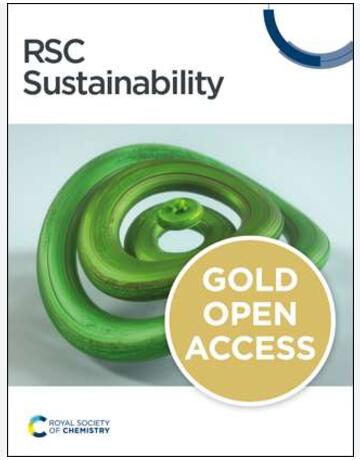Anaerobic Digestion of Food Waste with the Addition of Biochar Derived from Microwave Catalytic Pyrolysis of Solid Digestate
IF 3.3
3区 环境科学与生态学
Q2 ENVIRONMENTAL SCIENCES
引用次数: 0
Abstract
This study explores the potential of biochar derived from microwave-assisted catalytic pyrolysis of solid digestate as an additive to enhance the stability and performance of the anaerobic digestion process. The focus was placed on the effects of biochar dosage, pyrolysis temperature, and pyrolysis catalyst on methane production. Biochemical methane potential (BMP) tests using synthetic food waste as the substrate revealed a dosage-dependent relationship with specific methane yield (SMY). At a low biochar dosage of 0.1 g/g total solids (TS), improvement in methane (CH4) production was marginal, whereas a high dosage of 0.6 g/g TS increased CH4 content by at least 10% and improved yield by 35–52%. ANOVA analysis indicated that biochar dosage level significantly influenced CH4 yield, while pyrolysis temperature (400 °C vs. 500 °C) and catalyst (20 wt% K3PO4 vs. 10 wt% K3PO4/10 wt% clinoptilolite) did not lead to significant differences in CH4 yield between the treatments. Correlation analysis results suggested that biochar’s most impactful properties on methane yield would be dosage-adjusted specific surface area (or total surface area per unit volume of substrate) and aromaticity index. The findings underscore the potential of solid-digestate-derived biochar as a beneficial additive for anaerobic digestion and hence the sustainability of food waste management system.添加微波催化热解固体沼渣产生的生物炭厌氧消化厨余垃圾
本研究探讨了微波辅助催化热解固体沼渣所产生的生物炭作为添加剂的潜力,以提高厌氧消化过程的稳定性和性能。研究重点是生物炭用量、热解温度和热解催化剂对甲烷产量的影响。以合成厨余为基质进行的生化甲烷潜能(BMP)测试表明,生物炭用量与特定甲烷产量(SMY)之间存在相关性。生物炭的低用量(0.1 克/克总固体(TS))对甲烷(CH4)产量的提高微乎其微,而高用量(0.6 克/克总固体(TS))可使 CH4 含量至少提高 10%,产量提高 35-52%。方差分析表明,生物炭用量水平对 CH4 产率有显著影响,而热解温度(400 °C 与 500 °C)和催化剂(20 wt% K3PO4 与 10 wt% K3PO4/10 wt% Clinoptilolite)在不同处理之间并未导致 CH4 产率的显著差异。相关分析结果表明,生物炭对甲烷产量影响最大的特性是剂量调整后的比表面积(或单位体积基质的总表面积)和芳香指数。研究结果突出表明,固体消化物衍生的生物炭有潜力成为厌氧消化的有益添加剂,从而提高厨余管理系统的可持续性。
本文章由计算机程序翻译,如有差异,请以英文原文为准。
求助全文
约1分钟内获得全文
求助全文
来源期刊

Sustainability
ENVIRONMENTAL SCIENCES-ENVIRONMENTAL SCIENCES
CiteScore
6.80
自引率
20.50%
发文量
14120
审稿时长
17.72 days
期刊介绍:
Sustainability (ISSN 2071-1050) is an international and cross-disciplinary scholarly, open access journal of environmental, cultural, economic and social sustainability of human beings, which provides an advanced forum for studies related to sustainability and sustainable development. It publishes reviews, regular research papers, communications and short notes, and there is no restriction on the length of the papers. Our aim is to encourage scientists to publish their experimental and theoretical research relating to natural sciences, social sciences and humanities in as much detail as possible in order to promote scientific predictions and impact assessments of global change and development. Full experimental and methodical details must be provided so that the results can be reproduced.
 求助内容:
求助内容: 应助结果提醒方式:
应助结果提醒方式:


